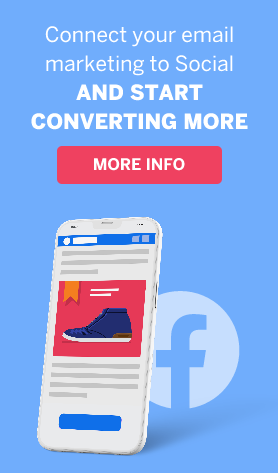Customer Email Segmentation: Getting the Right Balance
As marketers, we aim to provide the most personalized and individualized messages to our audiences — this is why we do customer segmentation. But, we can only create so many segments. How do you find the right balance?
As much as we would like to highly personalize everything, it would be impossible with thousands of email owners with different backgrounds, needs, and preferences. Make your job easier by using the principles below as your guide in segmentation to achieve the right balance and effectively target each of your subscribers.
3 Major Approaches to Customer Segmentation:
Tien Anh Nguyen classified customer segmentation into the following major groups. Use the following groups to divide your email list. You can start with the available data you have. As your subscribers interact with you, you can improve and expand your segmentation.
1. Priori
This approach uses publicly available data such as location, age, gender, and company size. Though this kind of information is essential in personalization, it is limited because other parties also have access to it. You should strive to go beyond this type of grouping.
2. Needs-based
This kind of segmentation is derived from market research. Data is gathered using the response of customers to different promotions and offers. You can use marketing automation to easily gather needs-based information.
3. Value-based
This segmentation approach is based on the economic value of consumers. It can be derived using details from client interaction over a period of time.
Segmentation based on purchasing decisions
This type of segmentation can only be achieved if a consumer made a purchase. You shouldn’t let your consumer go just because they already made a purchase. Customer acquisition research proves that it is five times more expensive to gain a new customer than to retain an existing one. So use the data from your consumers’ purchase to make them come back for more!
Four categories based on purchasing decisions:
- Routine buyers
These customers buy a product because of necessity. They don’t have a strong attachment with the brand or the seller. Consequently, they often pay the products in full.
- Attentive buyers
This group of buyers is aware of your brand’s importance to their company. They are oriented about your advantages over your competitors. They are cost-sensitive and they expect high-quality service. As a result, they often receive discounts and a higher level of service.
- Relationship buyers
Relationship buyers understand the importance of a brand, competition, and their sales agents. They usually work with one supplier as long as the price is right. In return, they receive a minimal discount and regular service.
- Bargain hunters
They are the most informed among the different groups. They are fully aware of the significance of the brand and competitive landscape. They often demand excellent customer service; always willing to change to another brand if the service is poor or the price is high. They often receive the best discounts and service.
Final Words
Customer email segmentation can give the right balance in providing the best customer experience. Use the principles above as your guide when segmenting your email list.
For your segments to continually yield success, you have to keep on improving it. Successful email segmentation doesn’t happen overnight. You have to constantly gather data and measure the response of your recipients. Modify your segmentation according to the results. As you improve your segmentation, you will also improve your customer satisfaction.


